idea使用Mybatis逆向工程插件詳情
一、使用mybatis連接數據庫
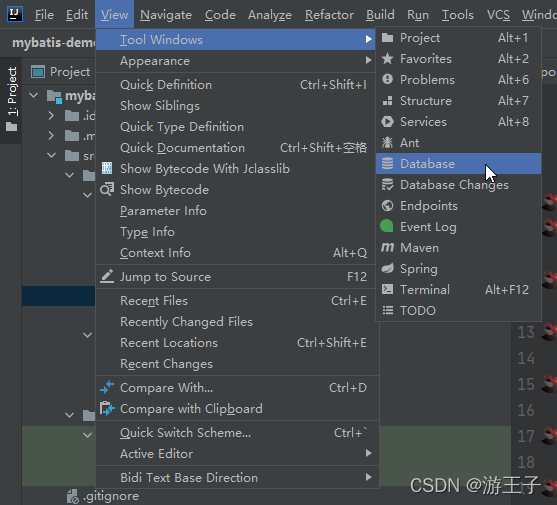
添加連接的mysql的信息,測試鏈接成功即可。
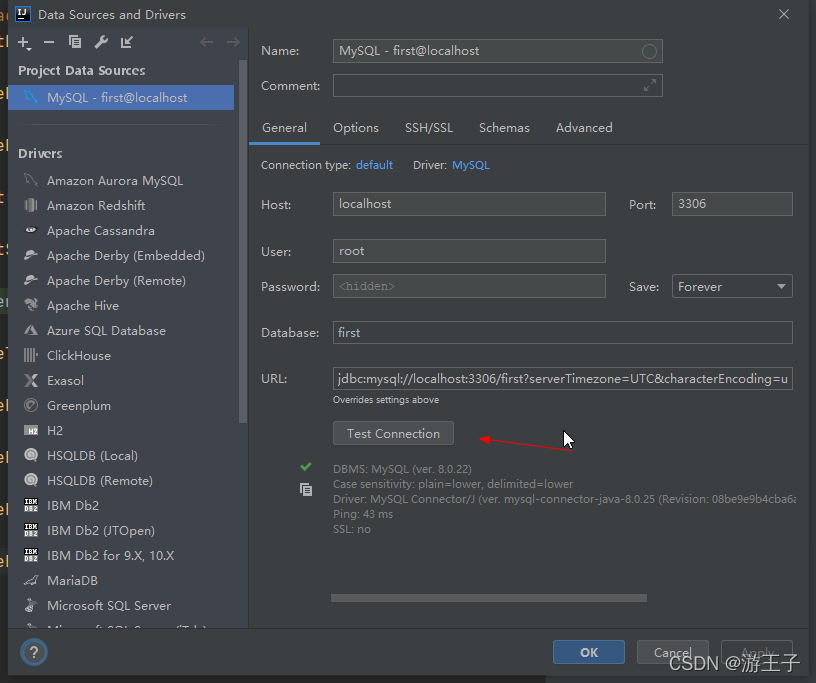
二、安裝Better-Mybatis-Generator插件
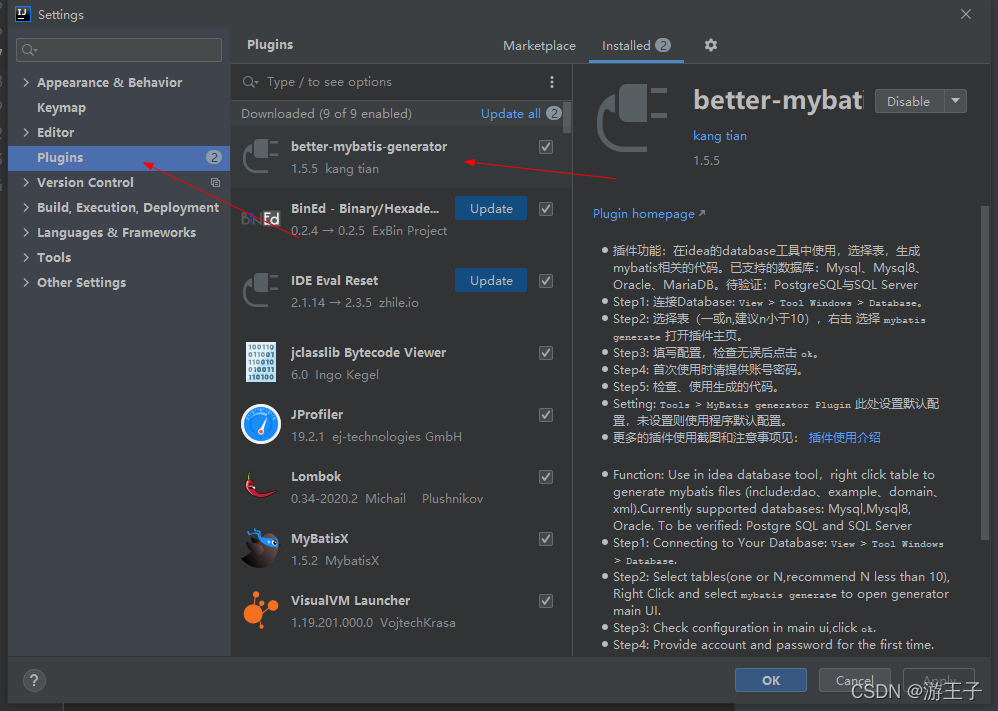
安裝成功後,在需要生成的表上右鍵選擇mybatis-generator。
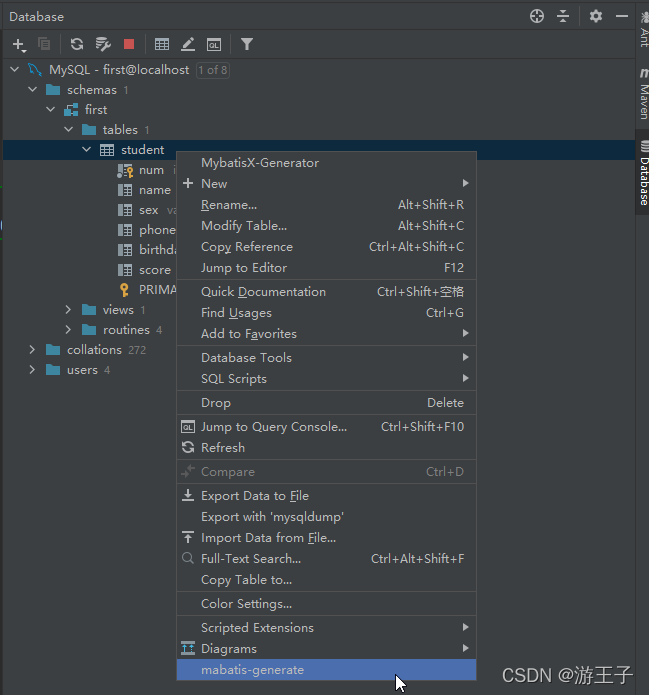
添加要生成的一些配置。
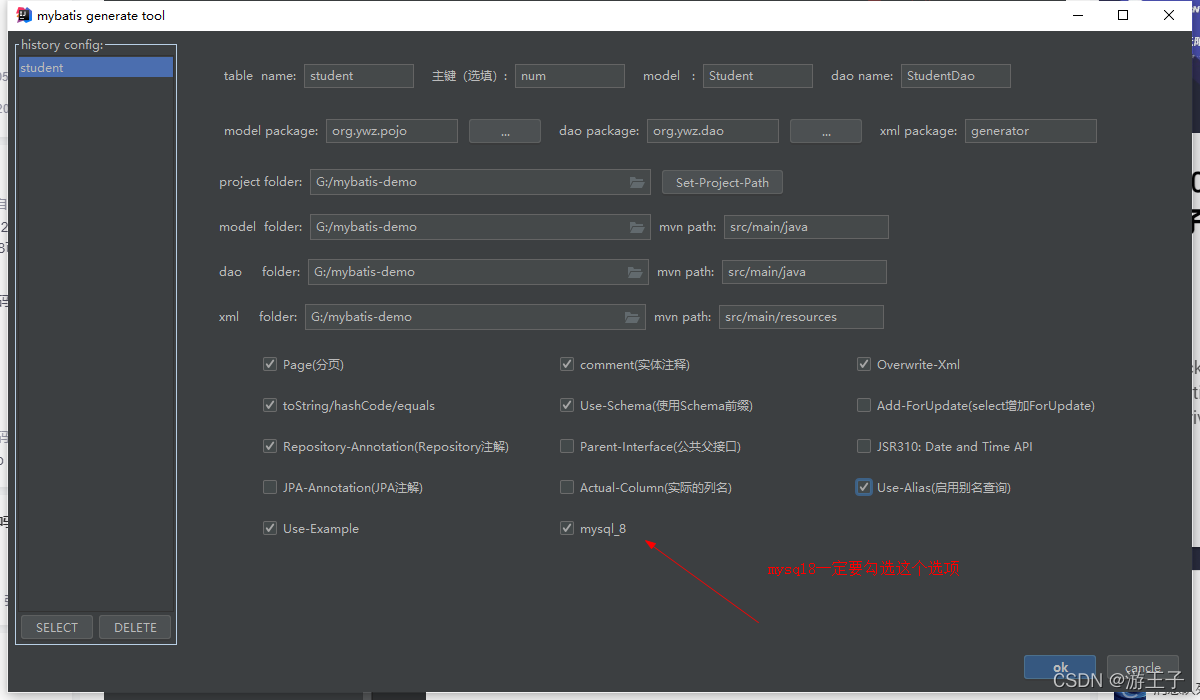
點擊OK,第一次生成會彈出窗口,需要輸入數據庫的帳號密碼。可以看到生成該表對應的mapper接口、實體類和sql。
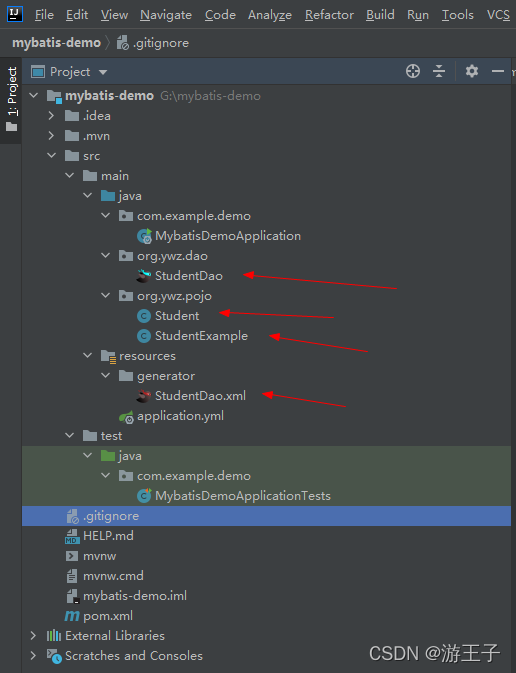
三、關於example類詳解
1、example成員變量
mybatis-generator會為每個字段產生Criterion,為底層的mapper.xml創建動態sql。如果表的字段比較多,產生的example類會十分龐大。理論上通過example類可以構造你想到的任何篩選條件。
//作用:升序還是降序
//參數格式:字段+空格+asc(desc)
protected String orderByClause;
//作用:去除重復
//true是選擇不重復記錄,false,反之
protected boolean distinct;
//自定義查詢條件
//Criteria的集合,集合中對象是由or連接
protected List<Criteria> oredCriteria;
// 分頁的顯示條數
private Integer limit;
// 分頁的起始下標
private Long offset;
//內部類Criteria包含一個Cretiron的集合,
//每一個Criteria對象內包含的Cretiron之間是由 AND連接的
public static class Criteria extends GeneratedCriteria {
protected Criteria() {super();}
}
//是mybatis中逆向工程中的代碼模型
protected abstract static class GeneratedCriteria {......}
//是最基本,最底層的Where條件,用於字段級的篩選
public static class Criterion {......}
2、example使用
在MybatisDemoApplicationTests類中進行測試:
package org.ywz.test;
import org.junit.jupiter.api.Test;
import org.junit.platform.commons.util.StringUtils;
import org.springframework.beans.factory.annotation.Autowired;
import org.springframework.boot.test.context.SpringBootTest;
import org.ywz.dao.StudentDao;
import org.ywz.pojo.Student;
import org.ywz.pojo.StudentExample;
import java.util.List;
/**
* Example類使用說明
*/
@SpringBootTest
class MybatisDemoApplicationTests {
@Autowired
private StudentDao studentDao;
@Test
void contextLoads() {
StudentExample studentExample = new StudentExample();
// 查詢數據的總條數 類似於:select count(*) from student
long l = studentDao.countByExample(studentExample);
System.out.println("---------------總條數----------------");
System.out.println("數據庫的總條數:" + l);
System.out.println("----------------and條件---------------");
// where條件查詢或多條件查詢
Student student = new Student();
student.setName("王五");
student.setSex("男");
selectAndCondition(student);
System.out.println("---------------or條件----------------");
selectOrCondition(student);
System.out.println("-----------------模糊查詢--------------");
student.setName("王");
selectLikeCondition(student);
System.out.println("-----------------分頁查詢--------------");
selectLimit();
}
/**
* where條件查詢或多條件查詢
* 類似於:select * from student where name={#student.name} and sex={#student.sex} order by score asc;
*
* @param student
*/
private void selectAndCondition(Student student) {
StudentExample studentExample = new StudentExample();
StudentExample.Criteria criteria = studentExample.createCriteria();
studentExample.setOrderByClause("score asc"); //升序
studentExample.setDistinct(false); //不去重
if (StringUtils.isNotBlank(student.getName())) {
criteria.andNameEqualTo(student.getName());
}
if (StringUtils.isNotBlank(student.getSex())) {
criteria.andSexEqualTo(student.getSex());
}
List<Student> students = studentDao.selectByExample(studentExample);
students.forEach(System.out::println);
}
/**
* 類似於:select * from student where name={#student.name} or sex={#student.sex} ;
*
* @param student
*/
private void selectOrCondition(Student student) {
StudentExample studentExample = new StudentExample();
StudentExample.Criteria criteria1 = studentExample.createCriteria();
StudentExample.Criteria criteria2 = studentExample.createCriteria();
if (StringUtils.isNotBlank(student.getName())) {
criteria1.andNameEqualTo(student.getName());
}
if (StringUtils.isNotBlank(student.getSex())) {
criteria2.andSexEqualTo(student.getSex());
}
studentExample.or(criteria2);
List<Student> students = studentDao.selectByExample(studentExample);
students.forEach(System.out::println);
}
/**
* 類似於:select * from student where name like %{#student.name}%
*
* @param student
*/
private void selectLikeCondition(Student student) {
StudentExample studentExample = new StudentExample();
StudentExample.Criteria criteria = studentExample.createCriteria();
if (StringUtils.isNotBlank(student.getName())) {
criteria.andNameLike("%" + student.getName() + "%");
}
List<Student> students = studentDao.selectByExample(studentExample);
students.forEach(System.out::println);
}
/**
* 類似於:select * from student limit offset,limit
*/
public void selectLimit() {
StudentExample studentExample = new StudentExample();
studentExample.setOffset(2l);
studentExample.setLimit(5);
List<Student> students = studentDao.selectByExample(studentExample);
students.forEach(System.out::println);
}
}
運行結果:

官方文檔:MyBatis Generator Core – Example Class Usage Notes
到此這篇關於idea使用Mybatis逆向工程插件詳情的文章就介紹到這瞭,更多相關idea使用Mybatis逆向工程插件內容請搜索WalkonNet以前的文章或繼續瀏覽下面的相關文章希望大傢以後多多支持WalkonNet!
推薦閱讀:
- Tk.mybatis零sql語句實現動態sql查詢的方法(4種)
- mybatis example如何自動生成代碼 排序語句
- Mybatis重置Criteria的正確姿勢分享
- Mybatis Example的高級用法詳解
- MyBatis中criteria的or(或查詢)語法說明